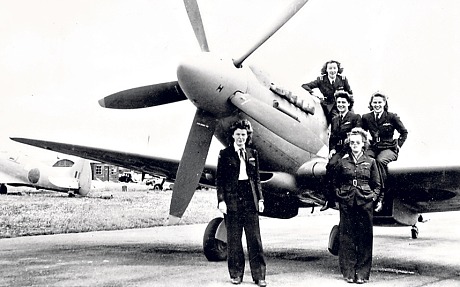A veteran female Spitfire pilot from World War Two recalls her unique war time story at the age of 98.
Mary Ellis now lives in the Isle of Wight, off the south coast of England. But when she was growing up she was taken to Hendon air show and she started a life-long love affair with air planes. Mary managed to get her father to allow her to go on a short flight in an Avro 504, and she loved every minute of it.
At the age of just 16, Mary had received her flying licence, and then in 1941 she responded to an appeal for female pilots by the Air Transport Auxiliary, was tested and accepted.
Mary was based at Hatfield, north east of London and learnt to fly all kinds of military aircraft including Spitfires, Hurricanes and Harvards. The purpose was not so that the female pilots could take part in military operations, but so that they could transfer newly produced planes from the manufacturer to the military bases in which they were required.
Once Mary had passed the basic training she was transferred to Hamble on the south coast, from where she flew and delivered almost 80 different types of aircraft, including around 400 Spitfires. During the war the Auxiliary delivered more than 300,000 aircraft to bases across the UK.
Mary believes she delivered around 1000 of the aircraft alone. Even though she had not taken part in military operations, Mary recalls how there was one occasion when she was shot at. In total almost 150 Auxiliary pilots were killed during the war, 14 of whom were female.
The largest plane Mary flew was the Wellington bomber, when she landed at her destination the ground crew asked where the pilot was and Mary had to confirm that she was in fact the pilot!
Towards the end of World War Two as jet aircraft were coming into use, Mary delivered the first Meteor jet. She was told that she would only be able to fly for around 35 minutes, after which she would run out of fuel, so Mary had to arrive at her destination within that time and she did.
The Air Transport Auxiliary pilots were commemorated with their own memorial in 2006 at White Waltham air base in Berkshire.
The pilots were always a secondary thought, compared to those who fought head to head with the German Luftwaffe. However they too had a crucial role in the war effort and without them the actual fighting and bombing against the Nazis wouldn’t have been able to take place.
At 98, Mary no longer flies alone, but she does still get airborne, but thinks of her role in the war as nothing special, she says she was just doing her job.
